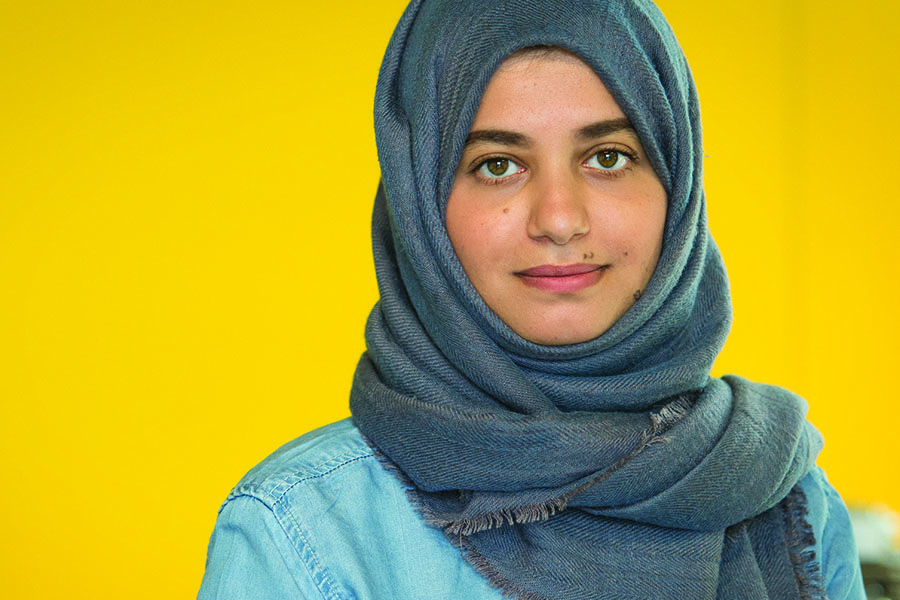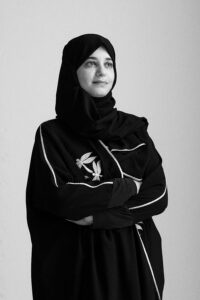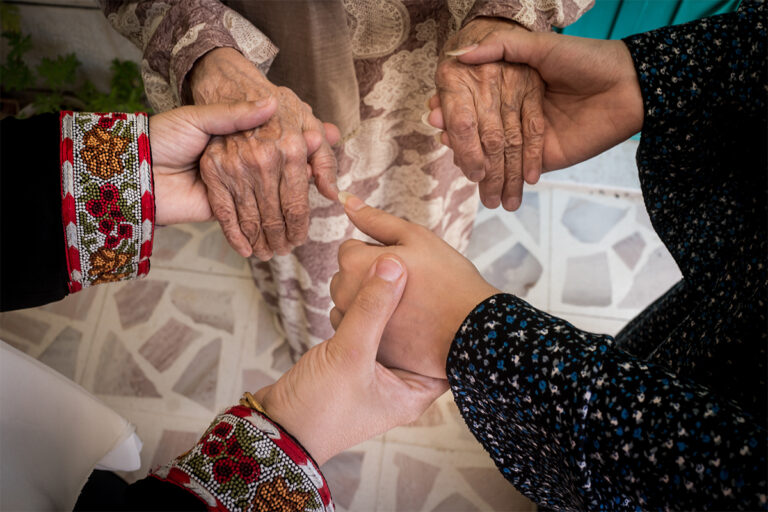
To celebrate Saudi Arabia’s return to the Venice Biennale, celebrated land artist Zahrah Al-Ghamdi created a stunning site-specific installation in 2019.
In her sensitive and personal work, Al-Ghamdi uses natural materials to explore the poetics of the past and the changing nature of village life in Saudi Arabia.
Exhibiting across the Middle East and Europe, she is one of the brightest stars in a new constellation of Saudi artists.
Part of a dazzling new wave of Saudi artists, Zahrah Al-Ghamdi is delighting international audiences with her poetic and sensitive meditations on memory, loss, and identity.
The Venice Biennale had never seen anything like it. Overrunning the floors, pillars and ceilings of an ornate 500-year-old arsenal, more than 50,000 pebbles, rocks, lumps of clay, and scraps of burnt leather transformed a Renaissance-era depot into a stunning simulacrum of the ancient lifestyle of the people of the Saudi deserts.
Evoking the landscape, architecture, and culture of village life in Saudi Arabia, this extraordinary organic artwork, After Illusion, was the creation of Jeddah-based artist Zahrah Al-Ghamdi.

In recent years, Al-Ghamdi, who was chosen to represent her country at the 2019 Biennale art fair, has emerged as one of the brightest stars in the fast-developing art world of Saudi Arabia and the Middle East. Exploring the impact of globalization and cultural change on traditional lifestyles, and making sensitive and imaginative use of natural materials, Al-Ghamdi’s handcrafted work is intensely personal. She is preoccupied with memory, with the passing of time, and with finding meaning in the past and in her own childhood experiences.
“I like my work to be authentic,” she says. “An artist’s work should reflect their identity and culture. For art to have feeling, an artist must put their soul into it. That is why I use materials related to my culture, my environment. and the homes and architecture of the places where I grew up.”
Al-Ghamdi says that the continuing changes in Saudi Arabia have helped unlock the potential of a new generation of artists, especially women artists, to express themselves and create works that resonate across society.
“I want my art to be something you can feel, not just something you can see.”
Zahrah Al-Ghamdi, Artist
A faculty member of the Art and Design department at Jeddah University, Al-Ghamdi is on a mission to help other artists find their way in the art world.
“New opportunities are opening up for creative Saudi art students to develop their skills, display their work, and fulfill their ambitions,” she says. “It is an inspiring time to be an artist in Saudi Arabia.”

What inspires you most as an artist?
I grew up in southwestern Saudi Arabia, surrounded by traditional domestic architecture. All my art reaches back to the memory of these spaces and that culture. I am inspired by history, by stories, and by memories of places related to my childhood. Identity, loss, and storytelling are all important to me. I focus on the loss and extinction of traditional architecture.
I want my work to inspire intense feelings and emotions. Like other land artists, I use raw materials such as sand, clay, rock, and leather to express my feelings and bring out strong reactions in the viewer.
How is the Saudi art world changing?
When I started out, my art was just a hobby. The arts scene at that time in Saudi Arabia did not make it possible for me to go professional. Changes in the art world here have opened new doors for me, not only locally, but even internationally. The Ministry of Culture is now developing major events and supporting Saudi artists. These changes have made it possible for me to make a living from my art.

What is it like making installations in the deserts of Saudi Arabia?
I have always wanted to take my art pieces outside the walls of the gallery. This dream became possible with the Desert X project at Al-Ula, supported by the Ministry of Culture. Al-Ula is a magical, beautiful place. It used to be a crossroads of many different civilizations. I chose to install 6,000 tin cans traditionally used for storing dates, in many different colors and sizes. I filled the metal containers with reflecting mirrors and various shades of sand. The idea was to show how people of different races and backgrounds can come together in this one stunning landscape. I called it Glimpses of the Past.
What advice do you give to your students who are beginning their lives as artists?
I am passionate about teaching art. I always try to teach my students that to make art, you need to combine ideas, feelings, and skills. Some Saudi students are very shy about expressing how they feel or think. I see it as a success if I can push my students out of their shyness and make them braver about expressing themselves with their art.
I encourage them to display their work outside college. And I teach them that art is limitless![]()









